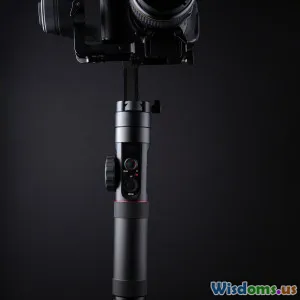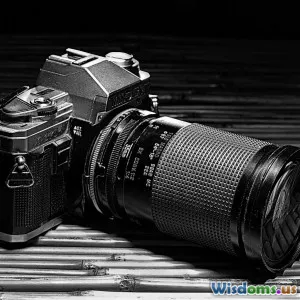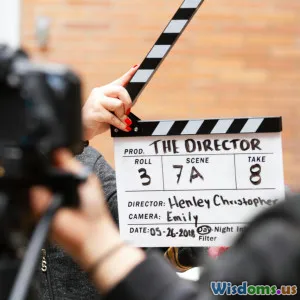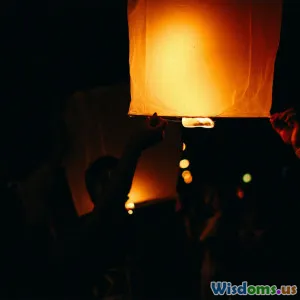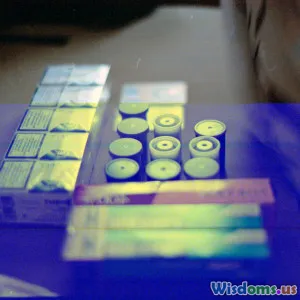
Imagery Beyond Words: Exploring Visual Narratives
9 min read Dive into how imagery transcends language, shaping stories through powerful visual narratives in photography and filmmaking. (0 Reviews)
Imagery Beyond Words: Exploring Visual Narratives
Introduction
Imagine staring at a photograph where a single frame captures not just a moment, but an entire story — raw emotion, historical context, personal identity, and universal themes all intertwined. Visual narrative is a language beyond words, transcending linguistic boundaries and conveying meaning deeply and instantly. In the realms of photography and filmmaking, imagery isn’t just illustrative; it’s communicative and transformative. This article ventures into how images craft narratives that speak volumes, their unique storytelling capabilities, techniques employed by masters in the field, and why they remain some of the most compelling forms of communication in today’s visually-driven culture.
The Essence of Visual Narratives
Visual narratives use images as the primary medium to tell a story — much like a novel or a poem uses words. In photography, a single photograph or a curated series sequences visual elements to express ideas, emotions, or events. Filmmaking builds on this foundation by combining moving images, sound, and editing to extend and enrich the narrative.
Why Visuals Speak Louder
Humans are inherently visual creatures; neuroscientific studies indicate that roughly 50% of the brain’s cortex is involved in visual processing. According to MIT research, the brain processes images 60,000 times faster than text. Visual stories tap into intuition and empathy, giving access to moods and concepts that might resist verbal expression.
For example, Steve McCurry’s iconic "Afghan Girl" photograph is instantly recognizable and evocative, raising awareness about refugees and conflict without a single word uttered. Similarly, in film, directors like Terrence Malick use imagery that feels poetic and spiritual, allowing viewers to ‘read’ feelings beyond dialogue.
Types of Visual Narratives
- Single-frame narratives: A powerful standalone image that suggests a story, often leaving interpretation open-ended.
- Photographic series: A curated sequence of photos presenting characters, environments, or events that unfold a layered story.
- Cinéma vérité and documentary film: Real-life narratives portrayed through candid, observational filming, placing authenticity at the forefront.
- Story-driven fiction films: Carefully scripted and visually composed to evoke specific emotional arcs.
Crafting Compelling Visual Narratives
Mastering visual storytelling requires understanding and harnessing diverse elements.
Composition and Framing
The way subjects are positioned within the frame fundamentally shapes narrative meaning. Consider the use of:
- Rule of Thirds: Placing elements off-center to create tension or balance.
- Leading Lines: Direct the viewer’s eye through the story.
- Negative Space: Suggests isolation, contemplation, or scale.
For example, Sebastião Salgado’s documentary photography often employs striking compositional techniques to emphasize human dignity and plights within vast or intimate contexts.
Symbolism and Visual Metaphors
Objects, colors, and settings act as symbols. A cracked mirror can suggest fractured identity; dusk lighting may imply endings or transitions. For instance, Wong Kar-wai’s cinematography in In the Mood for Love uses repeating shadows and colors to symbolize longing and unfulfilled desire.
Lighting and Color Grading
Lighting manipulates mood; high contrast with deep shadows might imply mystery or tension, while soft, natural light feels intimate. Color palettes can narrate shifts in tone — considered in films like The Grand Budapest Hotel where bright pastel colors lend whimsy and nostalgia.
Editing and Sequencing
In filmmaking and photo essays, the order and rhythm of images shape pacing and meaning. Jump cuts can convey urgency; slow dissolves suggest memory or dreamlike states. The photojournalistic coverage of the Vietnam War showed how image sequences amplified public emotion and activism.
Sound Design and Music (in Filmmaking)
Sound complements visuals. Ambient noise grounds realistic storytelling, while music can evoke emotional cues, build suspense, or amplify narrative arcs as seen in the emotive scores of Blade Runner or Schindler’s List.
Real-World Examples of Visual Narrative Excellence
Photography: Dorothea Lange and The Great Depression
Lange’s series "Migrant Mother" transcended documentation; it narrated the desperation, strength, and dignity of those struggling through the Dust Bowl. This single image galvanized public sentiment during a dynamic historical moment, showcasing visual storytelling as a powerful tool for social change.
Filmmaking: Alfonso Cuarón’s Children of Men
This film employs long, uninterrupted shots and desaturated color grading to immerse the audience into a dystopian world. The absence of overt exposition forces viewers to 'read' the visual context carefully, generating tension and empathy in a narrative about hope amid chaos.
Contemporary Visual Narratives: Instagram and Visual Micro-Storytelling
Social media platforms democratize visual storytelling. Instagram photographers create micro-narratives — a single post or a carousel that conveys moments or campaigns, such as National Geographic’s posts that tell stories from around the globe.
The Impact and Future of Visual Narratives
The expansion of digital media, virtual reality (VR), and augmented reality (AR) transforms how stories are told visually. VR films allow immersive experiences where viewers navigate narratives space and time — imagine standing in a Somali refugee camp, seeing firsthand the living conditions.
In addition, AI-driven photography and filmmaking tools provide new creative avenues, automating routine tasks but also sparking debates about authenticity in visual narratives.
Moreover, visual narratives contribute substantially to cultural memory and education. They shape public discourse on politics, identity, and environment, offering accessibility where language barriers exist.
Conclusion
Imagery as a narrative medium offers unparalleled immediacy, emotional resonance, and depth. From a solitary photograph that whispers stories of resilience to a beautifully crafted film that unfolds complex human drama, visual narratives enrich our understanding beyond the limits of words.
For creators and audiences alike, embracing the power of visual storytelling invites deeper empathy, cultural insight, and inspiration. As technology advances and platforms evolve, the capacity of imagery to tell compelling stories will only grow — challenging us to see, feel, and think in new dimensions.
Whether you're an aspiring photographer, filmmaker, or a passionate observer, exploring visual narratives opens a gateway to experiencing the unspoken stories that shape our world.
References:
- McCurry, Steve. "The Afghan Girl." National Geographic, 1985.
- Cuarón, Alfonso. Children of Men. Universal Pictures, 2006.
- Lange, Dorothea. Migrant Mother series, 1936.
- In the Mood for Love cinematography by Christopher Doyle.
- Research from MIT on image process speed.
- Sebastião Salgado's photographic projects.
By weaving vision with story, photography and filmmaking remain timeless art forms capturing the human condition beyond words.
Rate the Post
User Reviews
Popular Posts
















